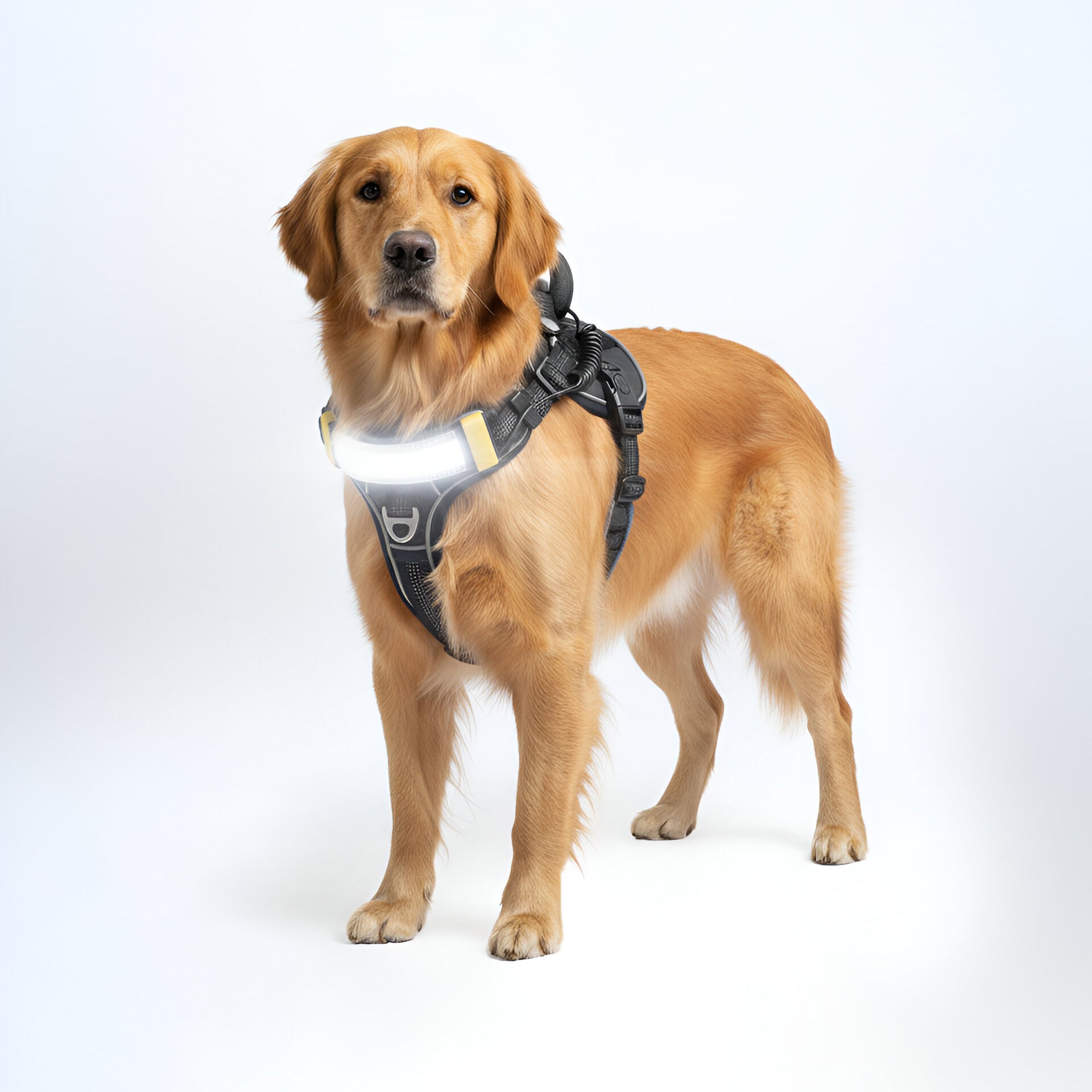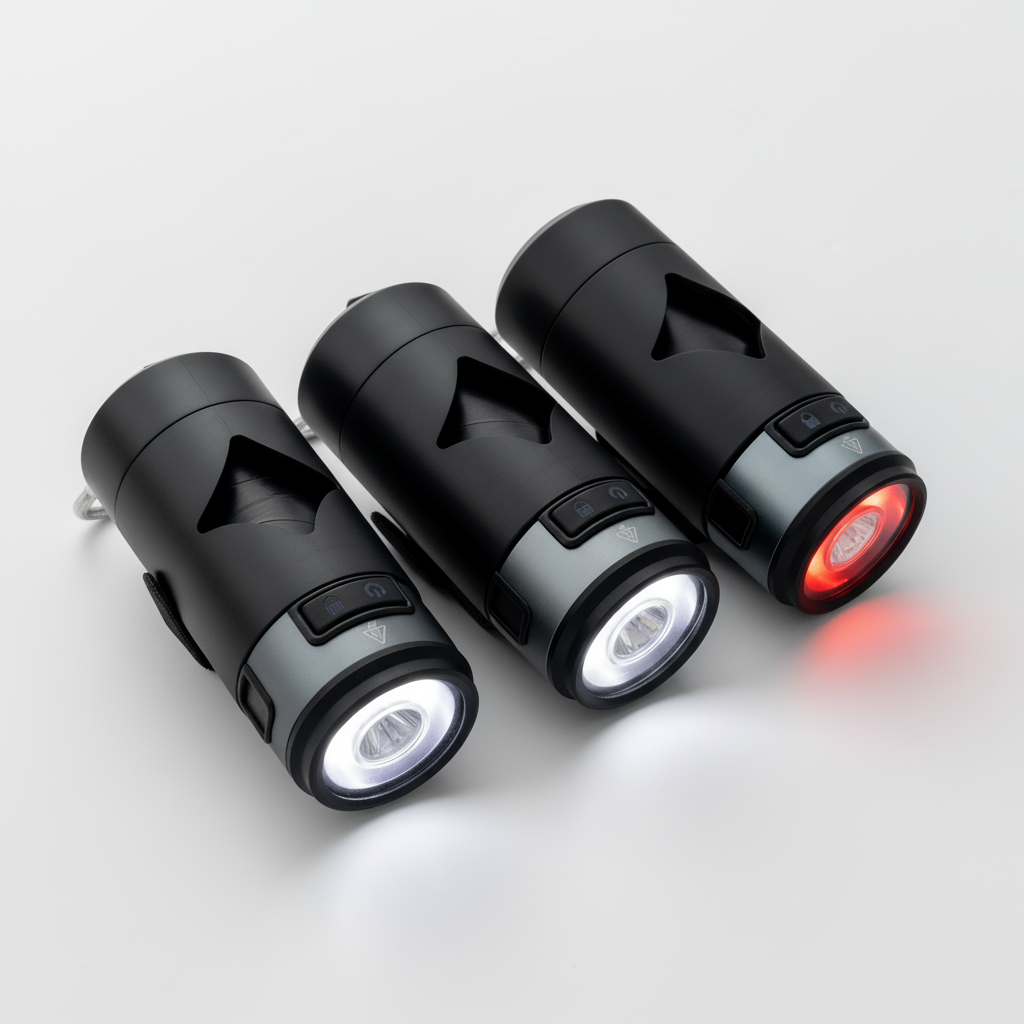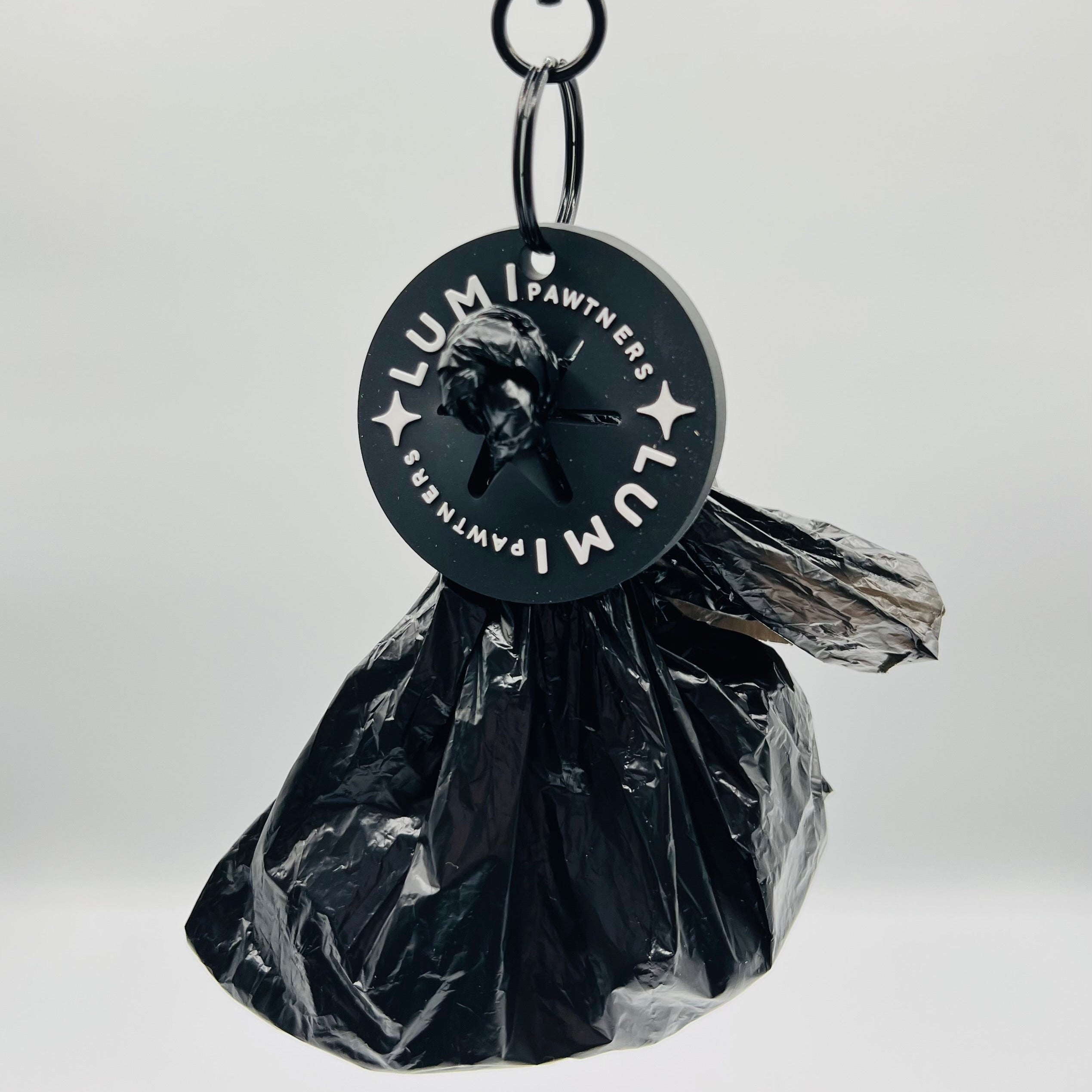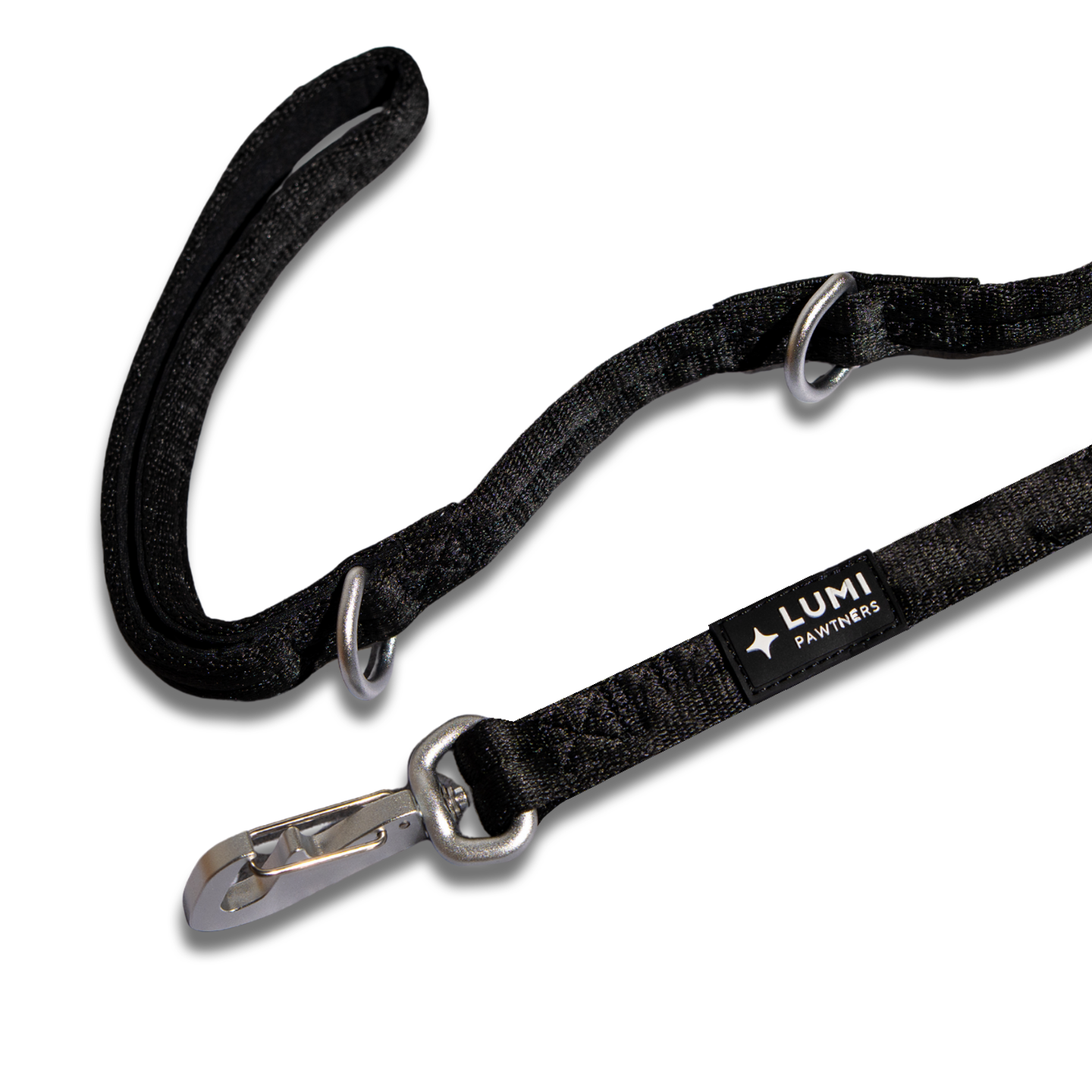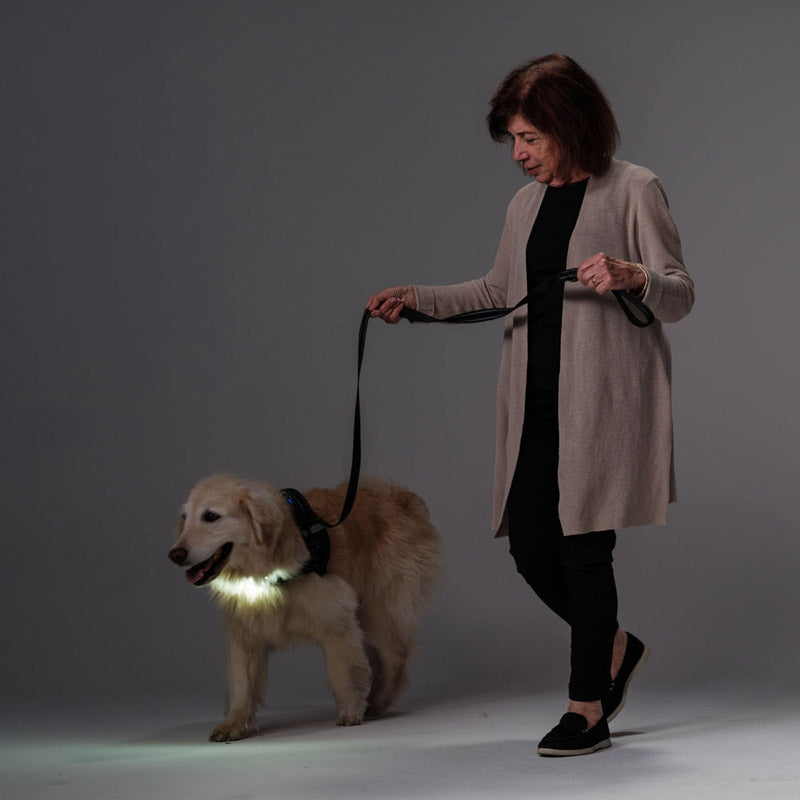You know that moment when you clip the leash onto your dog's collar and they immediately transform into a sled dog competing in the Iditarod? Or maybe they plant themselves like a tree and refuse to budge? Yeah, we've all been there.
Leash training isn't just about making walks less chaotic (though that's definitely a perk). It's actually one of the most important skills you can teach your dog, for their safety and yours. And here's something that might surprise you: proper leash training could literally prevent you from ending up in the emergency room.
Why This Actually Matters More Than You Think
Let's talk about something most people don't realize: leash-related injuries are a real thing, and they're increasing. According to research published in the Journal of the American Veterinary Medical Association, over 350,000 people ended up in U.S. emergency departments due to dog leash-related injuries between 2001 and 2018. Most of these? Caused by dogs pulling on the leash.
We're talking finger fractures, shoulder sprains, traumatic brain injuries from falls, and hip fractures, especially in women over 65. And get this: a UK and Irish survey found that 82.7% of dogs pull on the leash. So if your dog is a puller, they're in the majority.
But here's the good news: leash training doesn't just protect you from injury. It also protects your dog from darting into traffic, getting into fights with other animals, or ending up in any number of dangerous situations. Plus, walks become way more enjoyable when you're not being dragged down the street like a water skier who lost their skis.
The Science Behind Training (Spoiler: Rewards Actually Work)
Before we dive into the how-to, let's clear something up: there's a ton of research on dog training methods, and the science is pretty clear. Reward-based training (using treats and praise) is more effective than punishment-based methods (yanking leashes, yelling, or using pain-inducing tools).
The American Veterinary Society of Animal Behavior states that only reward-based methods should be used for all dog training. Why? Because research shows that dogs trained with aversive methods (punishment, physical corrections) show more stress behaviors, learn more slowly, and can even develop a worse relationship with their owners.
Think about it like this: would you rather your dog walk nicely beside you because they want to (and because good things happen when they do), or because they're afraid of what happens if they don't? One builds trust and cooperation. The other builds anxiety.
So throughout this guide, we're focusing on positive reinforcement...making good behavior rewarding so your dog wants to repeat it.
Getting Started: The Gear That Actually Helps
Alright, let's talk equipment. The right gear can make a huge difference, but it's not about buying the most expensive stuff, it's about choosing what works for your dog.
The Leash: Skip the retractable leashes for training. Seriously. They teach dogs that pulling equals more freedom, which is the exact opposite of what you want. A standard 4-6 foot leash (nylon or leather) gives you control and consistency. Save the long lead for later, when your dog has mastered the basics.
Collar vs. Harness: This is where things get interesting. For dogs who pull, a harness—especially a front-clip harness—can be a game-changer. It redirects their forward motion back toward you, making pulling way less effective. Plus, harnesses distribute pressure across the chest instead of concentrating it on the delicate structures in the neck (remember what we talked about in our harness vs. collar guide?).
A collar should fit with enough room to slip two fingers between it and your dog's neck...snug enough that they can't slip out, loose enough that it's comfortable.
The Secret Weapon: High-value treats. Not their regular kibble, we're talking the good stuff. Tiny pieces of chicken, cheese, or whatever makes your dog lose their mind. You'll need a lot of them initially.
Pre-Game: Making the Leash Not Scary
Here's a rookie mistake: attaching the leash for the first time and immediately heading outside into a world of overwhelming stimuli. No wonder your dog freaks out.
Instead, start inside. Let your dog wear their collar and leash around the house while you're watching TV or making dinner. Let them drag it around (supervised, obviously you don't want it getting caught on furniture). Give them treats just for wearing it calmly.
The goal? Make the leash boring. Just another thing that exists in their world. No big deal.
Then, practice holding the leash. Stand still, hold it loosely, and reward your dog with treats every few seconds for just existing calmly while leashed. Gradually take a few steps around the house. Treat, treat, treat. You're building a positive association: leash = good things happen.
Only once your dog is completely comfortable with the leash inside should you venture outside. And even then, start in your yard or a quiet area before hitting the busy sidewalk.
The Core Training: Teaching Them to Walk Beside You
Now we get to the actual walking part. Here's the method that works:
Pick Your Side (and Stick With It)
Decide if you want your dog on your left or right side. It doesn't matter which, just be consistent. Dogs learn through repetition, and if you're constantly switching sides, you're confusing them.
The Stop-and-Go Game
This is the foundational technique, and it's simple but requires patience:
- Start walking with your dog on your chosen side
- The moment your dog starts to pull ahead and the leash gets tight, stop walking immediately
- Stand still like a statue. Don't move forward even an inch
- Wait for your dog to look back at you or for the leash to go slack
- The instant there's slack in the leash, praise them and start walking again
- Repeat approximately 473 times (kidding—but also not kidding)
What you're teaching: Pulling = we stop. Loose leash = we move forward and good things happen.
Yes, your first walk might take 20 minutes to go 20 feet. That's normal. Stick with it.
The Direction Change Method
This is another excellent technique, especially for dogs who are really motivated to sniff that thing over there:
When your dog pulls ahead, calmly turn around and walk in the opposite direction. No warning, no yanking—just change course. When your dog catches up to you, praise and reward them.
What this teaches: "Oh, if I want to go somewhere, I need to pay attention to where my human is going."
Reward the Good Stuff
Every few steps that your dog walks beside you with a loose leash? Treat. Verbal praise. Make it a party. In the beginning, you're rewarding constantly. As they get better, you can gradually space out the treats, but never completely stop rewarding good behavior.
Pro tip: Keep the treats in your pocket on the side your dog is walking on. This naturally encourages them to stay close to you.
Dealing With Distractions (AKA Real Life)
Training in your quiet living room is one thing. Training when there's a squirrel/another dog/a falling leaf/literally anything mildly interesting is another thing entirely.
Start small. Begin training in the most boring, distraction-free environment possible. Your living room. Your backyard. That empty parking lot at 6 AM. Once your dog is nailing it there, gradually increase the difficulty...quiet street, then busier street, then the park.
Use a focus cue. Teach your dog a "watch me" or "look" command before you even leave the house. Practice having them make eye contact with you for a treat. Then, when you're out walking and spot a potential distraction, use that cue to redirect their attention before they lock onto the squirrel.
Be more interesting than the environment. This is where those high-value treats come in. If your dog is more focused on sniffing every blade of grass than walking with you, you need to up your game. Bring better treats. Use a more excited voice. Make following you more rewarding than ignoring you.
Manage the environment. If your dog completely loses it around other dogs, cross the street before you get close. Give them space. Set them up for success by avoiding situations that are too challenging while they're still learning.
Building Up: Making Walks Longer
Once your dog understands the basics—walk beside you, loose leash, respond to their name—you can start increasing the duration and difficulty of walks.
Start with 5-10 minute training sessions. Short and successful is better than long and frustrating. As your dog improves, gradually extend the time. Mix in "sniff breaks" where you let them explore on a loose leash as a reward for good walking. This makes the whole experience more enjoyable for them.
Remember: every walk is a training opportunity. Consistency is everything. If you let them pull sometimes but not others, you're confusing them.
Troubleshooting: When Things Go Wrong
"My Dog Refuses to Walk"
Some dogs (especially puppies) just stop and plant themselves. Don't drag them—this creates negative associations. Instead:
- Check that the collar/harness fits properly and isn't uncomfortable
- Use treats to lure them forward a few steps, then reward
- Kneel down and call them excitedly
- Practice more indoors before venturing out
- Make sure they're not scared or overwhelmed
Sometimes dogs refuse to walk because they're anxious, not stubborn. If this persists, consult your vet or a professional trainer.
"My Dog Still Pulls Like a Freight Train"
If you've been consistent with the stop-and-go method and it's not working:
- Make sure you're stopping every single time they pull (consistency is key)
- Try a front-clip harness if you haven't already
- Increase the value of your treats
- Shorten your training sessions—5 minutes of focused training beats 30 minutes of letting them practice pulling
- Consider working with a professional trainer who uses positive reinforcement
"My Dog Goes Bananas Before Walks"
That pre-walk spinning/jumping/barking tornado? Super common. Here's the fix:
- Stay calm yourself (dogs feed off your energy)
- Pick up the leash and stand still. Wait for calm behavior
- Put the leash down if they get excited again
- Only attach it when they're calm
- Make this process boring, not exciting
- Wait for calm behavior before opening the door
This teaches them: Calm = we go. Crazy = we wait.
Advanced Stuff: Taking It to the Next Level
Once your dog has mastered basic leash walking, you can add verbal cues to make walks even smoother:
"Heel": Your dog walks close by your side, paying attention to you
"Let's go": Time to start walking or resume after a stop
"Easy": Slow down the pace
"Wait": Stop and wait (useful at curbs or doorways)
Teach these by pairing the word with the action and rewarding compliance. Start in low-distraction environments and practice, practice, practice.
Eventually, you might even work toward off-leash reliability, but that's a whole other journey and should only happen in safe, enclosed areas.
The Bottom Line
Here's the truth about leash training: it takes time, it requires patience, and it's sometimes frustrating. Your first few training sessions might make you question all your life choices.
But here's also the truth: it's absolutely worth it. A well-trained dog who walks nicely on a leash opens up your whole world. You can take them places. Walks become enjoyable instead of stressful. You're not risking injury every time you clip on the leash.
And perhaps most importantly, you're building a relationship based on communication and trust, not force and frustration.
So grab some treats, take a deep breath, and start small. Every journey begins with a single step, preferably one where your dog isn't dragging you face-first into a bush.
You've got this.
Quick FAQ
How long does leash training actually take?
Honest answer? It varies wildly. Some dogs get the basics in a few weeks. Others take months. Puppies tend to learn faster than dogs who've spent years practicing bad leash habits. The key is consistency...short, daily training sessions will get you there faster than occasional marathon sessions. If you're training for 10 minutes every single day, most dogs show significant improvement within 4-6 weeks.
What's the best age to start?
As early as possible—ideally around 8-10 weeks old. Puppies are sponges for learning, and you're establishing good habits before bad ones form. That said, the second-best time to start is right now, regardless of your dog's age. Adult and senior dogs can absolutely learn leash manners; it just might take a bit more patience.
Can I train an older dog with bad leash habits?
Absolutely yes. It's harder than starting from scratch with a puppy, but it's totally doable. You're essentially untraining years of reinforced behavior, so expect it to take longer and require more consistency. A front-clip harness can help give you better control while you're retraining. Don't give up, many adult dogs become excellent leash walkers with patient, consistent training.
What if my dog bites the leash?
Leash biting usually happens because your dog is either frustrated, overstimulated, or thinks the leash is a toy. Stop moving when they bite it, don't engage in a tug-of-war. Redirect them to an actual toy or treat. If they're biting from frustration, you might be pushing training too hard or too fast. Back up a step and make it easier. Some people find that using a chain leash (just for the part near the clip, not the whole thing) deters biting since it feels unpleasant to mouth.
Should I use a prong collar or choke chain?
Short answer: No. These aversive tools work through discomfort or pain, and the research shows they're not necessary for effective training. Studies demonstrate that reward-based training is just as effective (often more so) without the welfare risks. If your dog pulls severely, try a front-clip harness first, work with a certified positive reinforcement trainer, and put in the training time. Your dog—and your relationship with them—will be better for it.
Is it okay to let my dog sniff during walks?
Yes! Sniffing is how dogs explore their world and get mental stimulation. The key is teaching them the difference between "working time" (walking nicely) and "sniff break time" (when you give permission to explore). Many trainers recommend structured walks where you do focused leash training for part of the walk, then release your dog to sniff and explore as a reward. A walk that's all heel-work with no sniffing allowed isn't much fun for your dog.
